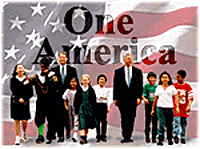 |
 |
The DeWitt Wallace-Reader's Digest Fund launched the Pathways program in 1989 in response to growing concerns about a shortage of teachers, and the consequences of a shrinking minority teaching pool in the face of growing minority enrollment. The program seeks to develop and test new models designed to increase and diversify the supply of well-trained public school teachers. The program also prepares these participants, known as Pathway Scholars, for the challenges and rewards of working in hard-to-staff urban and rural public schools in low-income communities where the need is greatest.
Pathway Scholars complete the program when they finish their teacher certification requirements. The Pathways program is currently operating in 41 colleges and universities nationwide. Scholarships and other support services are provided to qualified candidates who otherwise would not be able to pursue teaching careers. Previous participants have been skilled classroom aides, returned Peace Corps volunteers and adults seeking to change careers. The program uses specially tailored college courses and internships to prepare participants to teach in low-income and rural school districts. Creative recruitment, counseling, child care and financing methods are used to help students continue in the program. Pathway Scholars agree to teach in public schools for at least three years in return for the help they receive in earning their degrees and certification.
Outcomes and Significant Accomplishments More than 2,600 teaching candidates have enrolled in the Pathways program. Approximately two-thirds of these individuals are people of color. Of those involved in the program more than two years, 25 percent are returned Peace Corps volunteers and 75 are para-professionals and non-certified teachers. A recent evaluation of these students was completed to measure their progress. Forty-six percent of people enrolled have finished the program. Of the Peace Corps volunteers, more than 91 percent have completed over half of their graduation requirements, and 71 percent have passed the three-quarter mark. Of the para-professionals and non-certified teachers, 70 percent have completed over half of their graduation requirements, and 38 percent have passed the three-quarter mark.
|
![]()
To comment on this service,
send feedback to the Web Development Team.
![[White House icon]](/New/images/home_pin.gif)
![[Help Desk icon]](/New/images/help_pin.gif)